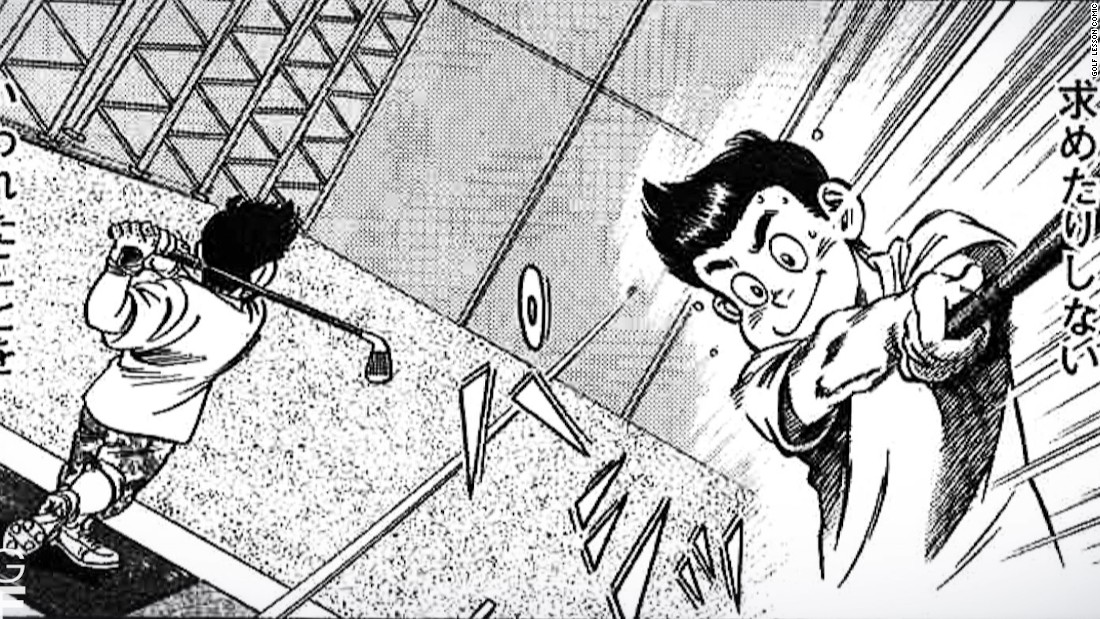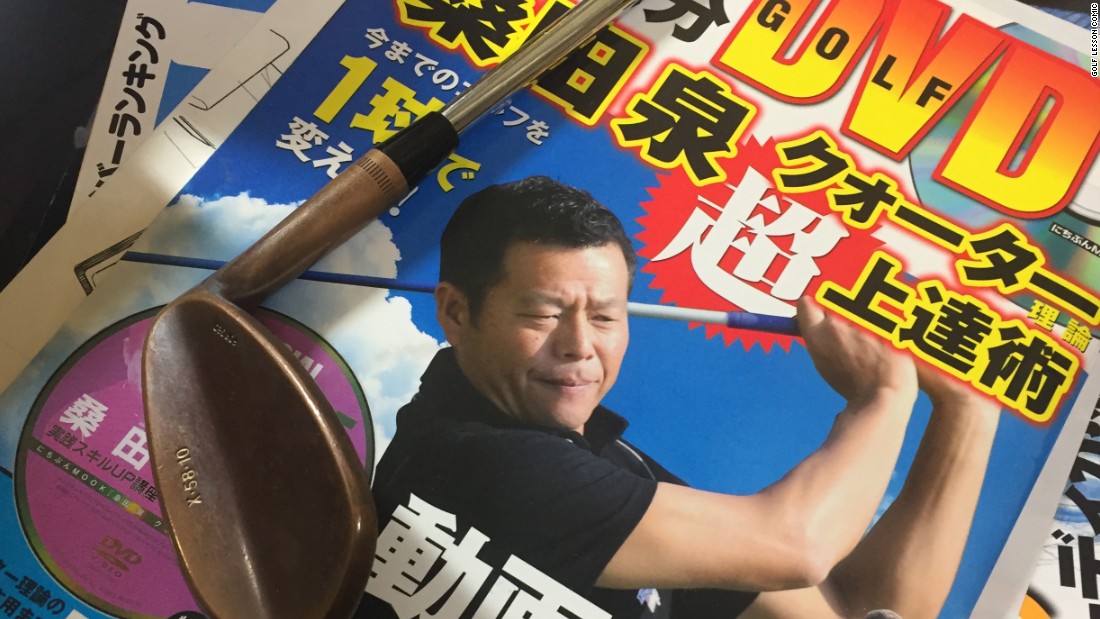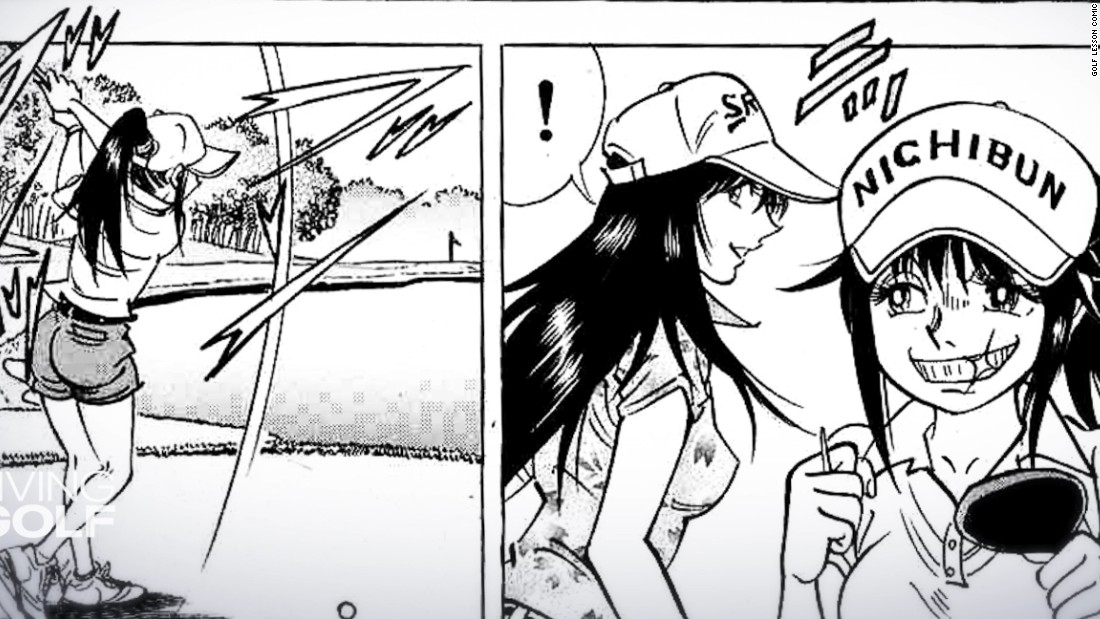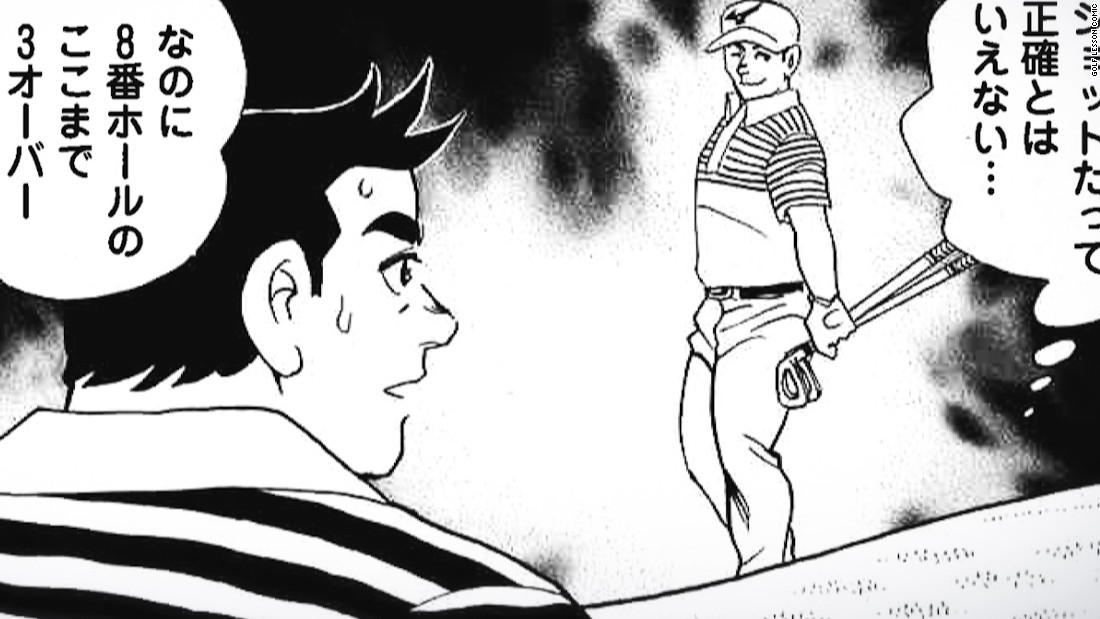Is manga the miracle cure for your golf game?
Might the key to curing your slice lie in the age-old Japanese art form of manga?
The comic craze, hugely popular in Japan since the early 19th century, boasts several notable golfing titles such as "Kaze NoDaichi" and "King Golf."
But "Golf Lesson Comic" is a slight anomaly in the genre. It's less about entertainment, and more about serious tips to help improve your drives, chips and putts.
"It's not about fun -- that's not really allowed in golf lesson manga," Takanobu Tamura, an illustrator at the comic, told CNN's Living Golf show.
"It's a lesson, so obviously, you have to draw it in a way the reader can understand.
"You have to write it so that the method the lesson professional is describing is properly communicated to the reader, so entertainment takes a backseat.
"And then you have to draw a proper hook shot to represent a hook, a slice to represent a slice shot -- having to draw the slice form is what I take most care over."
That authenticity and dedication is what compels 100,000 people to buy the magazine every month in what is the second biggest golf market on the planet behind the United States.
Utilizing the traits that manga is famed for -- expressive characters with big bulging eyes and abstract background designs -- "Golf Lesson Comic" illustrates scenarios that help the reader hone their swing.
It also drills down on an aspect of golf almost as important as a player's swing -- their mentality.
After all, Bobby Jones, the creator of the Masters tournament and one of America's most famous players once said: "Competitive sports are played mainly on a five-and-a-half inch court, the space between your ears."
Shinji Matsuyama, the magazine's editor, explained: "You often spend more time thinking than you do playing, and I think that such psychological depiction is suited to manga.
"You also have the artist's individuality coming out and the individuality of the professional who's overseeing it. It's the intersecting of all those different individual personalities that makes it so interesting, I think."
Tamura says in the mountain of self-help golf literature available, it is the unique illustrations that really cut through for readers.
"If you explain things in pictures it's clearer, easier for people to understand," he said. "So that's where the idea of using manga for golf lessons has come from.
"This goes for manga in general, but even though it's a lesson manga, you can create pictures that you couldn't normally capture with a still camera or on video, with manga."
Despite robust sales of the magazine and its standing in the world market, golf is on the decline in Japan.
The game boomed during the 1980s thanks to Japan's so-called "bubble economy" which saw property prices and the stock market rocket.
In turn, this created a corporate culture that saw golf as an extension of the boardroom and led to a burgeoning middle class. By the early 1990s, around 15 million people played regularly.
But when the bubble burst soon after, it led to a "lost decade" when the Japanese economy continued to shrink and prices kept on falling.
More than 100 of its courses closed and half that 15 million-strong army gave up as golf became seen by many as an expensive, time-consuming luxury.
"The fact that the golfing population of Japan is aging so much seems to have become a real problem, so I guess it's vital to bring in young people as players," Tamura said.
"Everyone's getting older and retiring, so there are fewer players, which might mean a contraction in the number of golf clubs, in the market, and people in the industry seem to be very concerned about it."
That aging demographic also has implications for the magazine.
"The age group of the readership is really going up, so just like with the world of golf, we'd like to bring in a younger age group, to attract younger people, and that includes the artists," Matsuyama added.
"And then there's the web. We've always done things on paper, but we're also looking to concentrate on the web."
The continued success of Japan's golfers on the world stage is an undeniably key factor if golf is to stage a resurgence in the country.
Should world No. 4 Hideki Matsuyama break through and become the first Japanese golfer to win a major, as he is being touted to do, it could have huge implications for the game.
With four wins on the PGA Tour, and two of those in 2017, he is the latest to carry the torch for Japan, after Ryo Ishikawa -- the youngest ever winner on the pro Tour in Japan aged just 15 -- and Ai Miyazato, a former women's world No. 1.
"Obviously, he's a superstar," Matsuyama said of his namesake.
"If he, Ryo Ishikawa, Ai Miyazato, and the like are in there, the customer, the reader will bite, so when you get a superstar like that appearing, the market gets excited -- it's a really good thing.
"Obviously, I'd like to see them win a major at some point."









Comments
Post a Comment